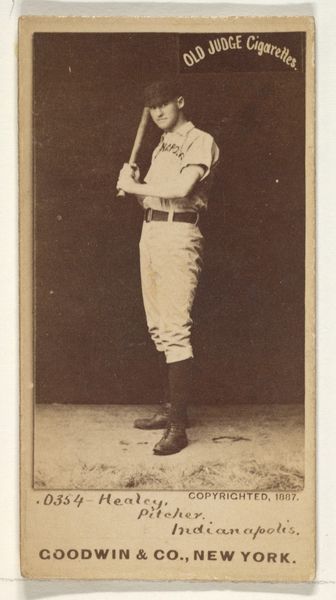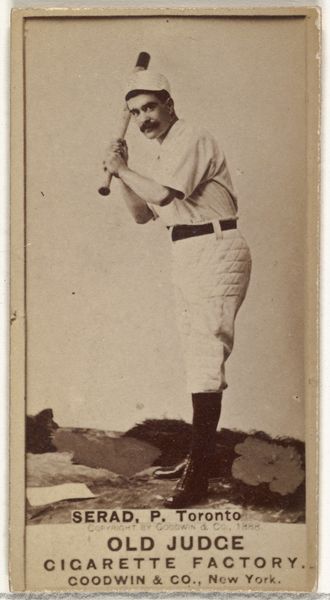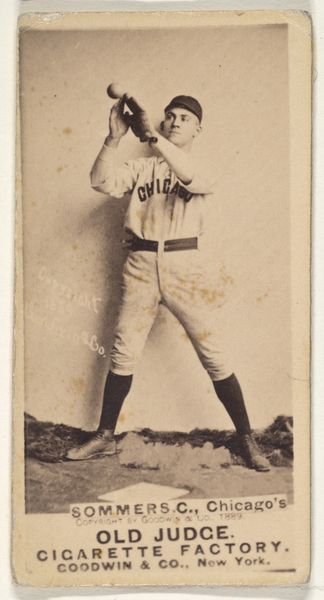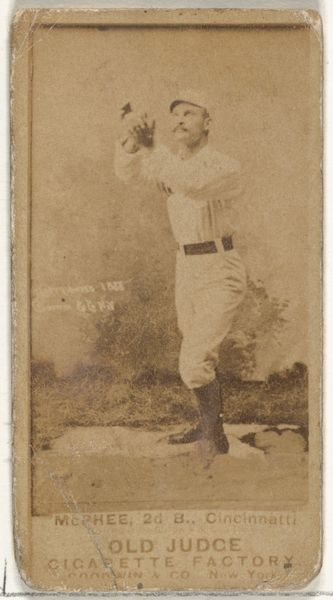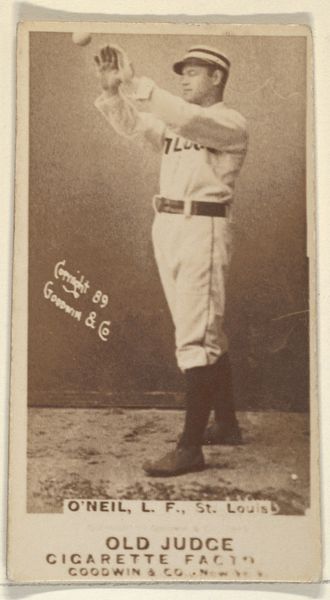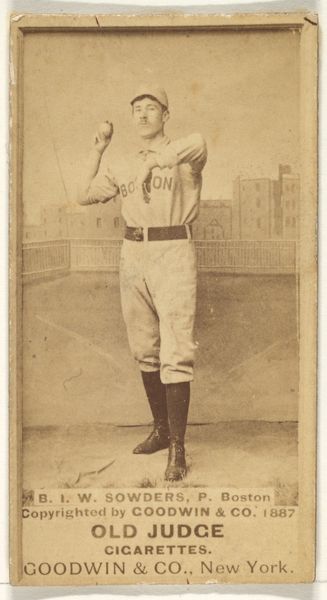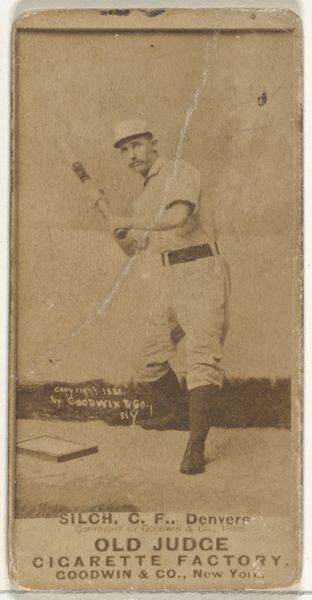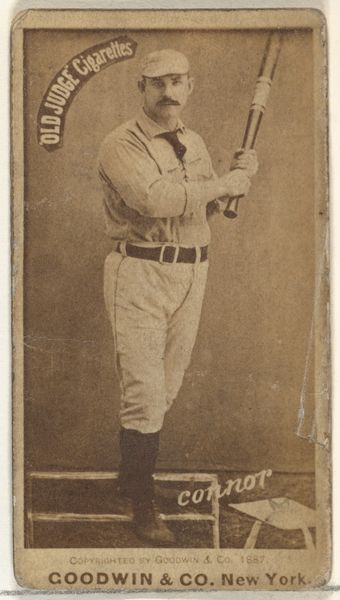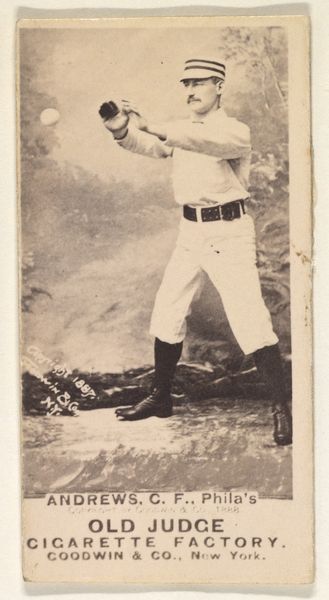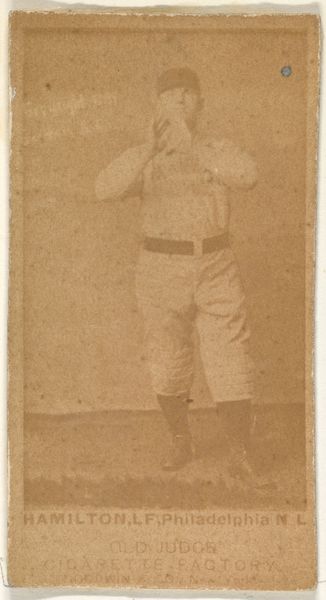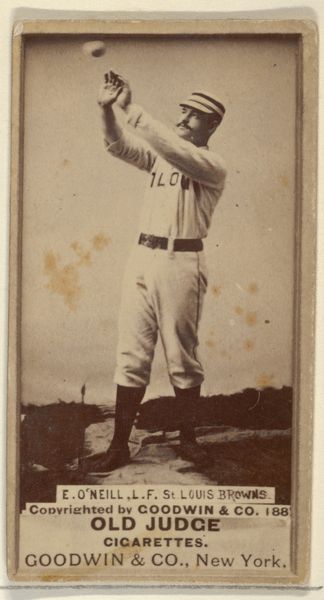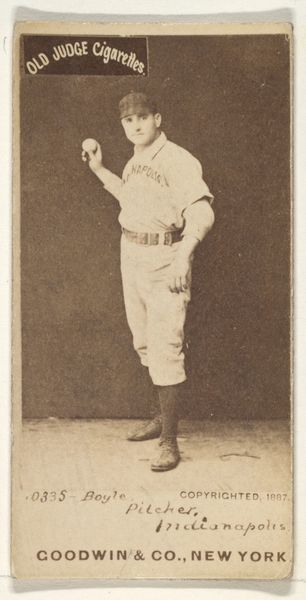
Duke Jantzen, Catcher, Minneapolis, from the Old Judge series (N172) for Old Judge Cigarettes 1889
0:00
0:00
print, photography, albumen-print
#
portrait
#
print photography
# print
#
baseball
#
photography
#
men
#
genre-painting
#
athlete
#
albumen-print
Dimensions: sheet: 2 11/16 x 1 3/8 in. (6.9 x 3.5 cm)
Copyright: Public Domain
Curator: This albumen print from 1889 depicts Duke Jantzen, a catcher for Minneapolis, as part of the "Old Judge" series produced by Goodwin & Company. Editor: It has this sepia tone that evokes nostalgia; the way he stands, with the ball poised, there's something very classic about it. Curator: Precisely, these cards were originally included in packs of Old Judge Cigarettes, functioning as both advertising and collectibles. The proliferation of these cards demonstrates the increasing commercialization of baseball. It's fascinating how mass-produced ephemera elevates the everyman player, transforming a local catcher into a nationally recognized figure, thus constructing early athletic celebrity. Editor: Thinking about the material production, albumen prints, aside from the readily available cigarette cards, would have represented a considerable level of technical skill, employing egg whites for the photographic emulsion. What sort of commentary did it make on late 19th-century notions of labor and the value afforded the different professions, juxtaposing the working-class athlete to a booming market, that for cigarettes. Curator: Absolutely, these cards weren't just images; they were commodities themselves. Think of the cultural exchange as they circulated within tobacco products, influencing public perception. These baseball cards legitimized athleticism as an early expression of idealized masculinity. Plus, consider how these were collected and traded, generating an secondary economy centered on these photographic prints. The "Old Judge" series exemplifies a key intersection between burgeoning consumer culture, the spectacle of baseball, and advancements in print media. Editor: And beyond this specific athlete’s narrative and this print, one has to think, who got rich doing this, versus the men featured here, playing baseball. This brings awareness and opens our scope on late 19th-century capitalism. Curator: Right, these visual relics force us to rethink how popular entertainment shapes societal norms. It gives us insight into both commerce and its evolving modes of production in the late 1800s. Editor: It gives a certain resonance as a representation of American industry, then and even now.
Comments
No comments
Be the first to comment and join the conversation on the ultimate creative platform.

